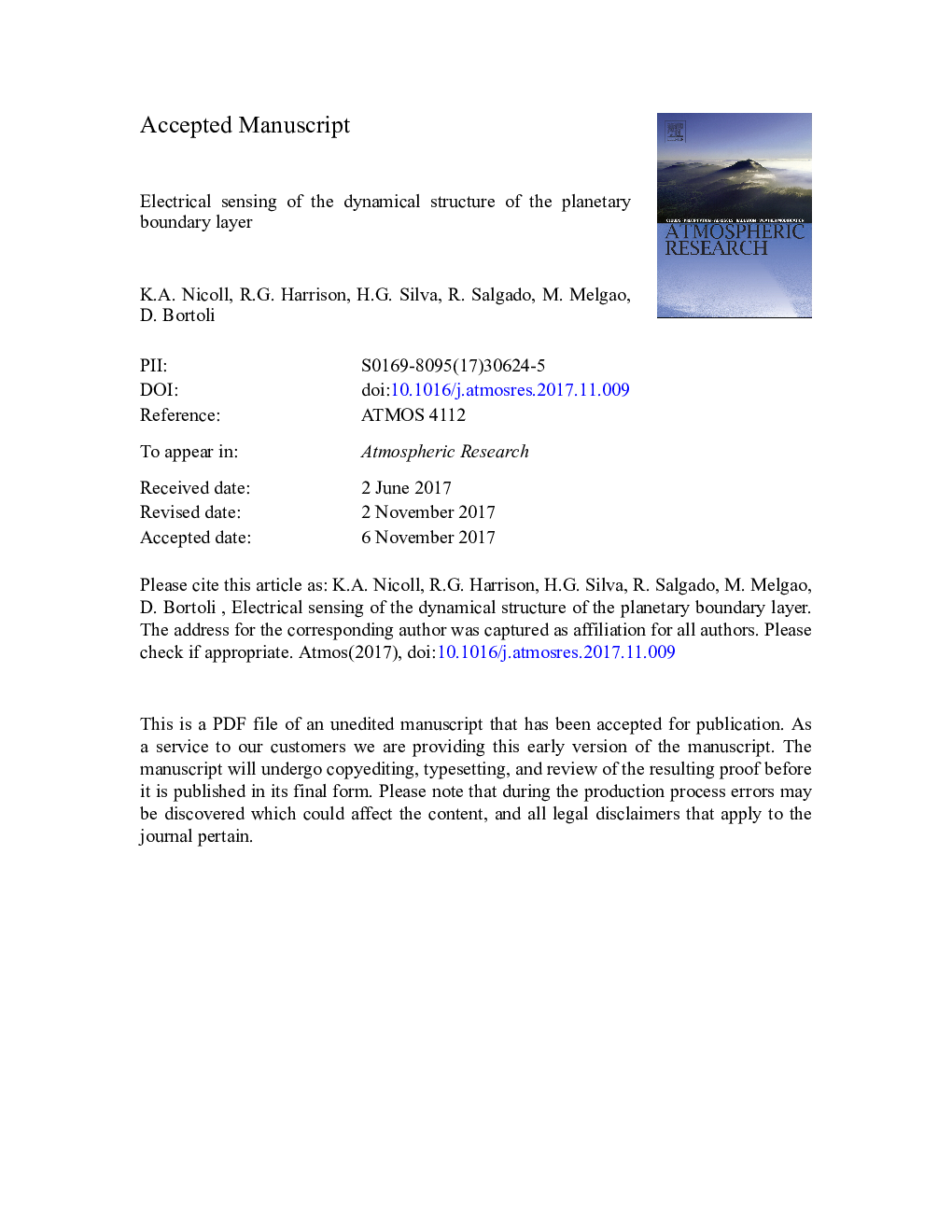| Article ID | Journal | Published Year | Pages | File Type |
|---|---|---|---|---|
| 8864793 | Atmospheric Research | 2018 | 44 Pages |
Abstract
Turbulent and convective processes within the planetary boundary layer are responsible for the transport of moisture, momentum and particulate matter, but are also important in determining the electrical charge transport of the lower atmosphere. This paper presents the first high resolution vertical charge profiles during fair weather conditions, obtained with instrumented radiosonde balloons over Alqueva, Portugal during the summer of 2014. The short intervals (4 h) between balloon flights enabled the diurnal variation in the vertical profile of charge within the boundary layer to be examined in detail, with much smaller charges (up to 20 pC mâ 3) observed during stable night time periods than during the day. Following sunrise, the evolution of the charge profile was complex, demonstrating charged ultrafine aerosol, lofted upwards by daytime convection. This produced charge up to 92 pC mâ 3 up to 500 m above the surface. The diurnal variation in the integrated column of charge above the site tracked closely with the diurnal variation in near surface charge as derived from a nearby electric field sensor, confirming the importance of the link between surface charge generation processes and aloft. The local aerosol vertical profiles were estimated using backscatter measurements from a collocated ceilometer. These were utilised in a simple model to calculate the charge expected due to vertical conduction current flow in the global electric circuit through aerosol layers. The analysis presented here demonstrates that charge can provide detailed information about boundary layer transport, particularly in regard to the ultrafine aerosol structure, that conventional thermodynamic and ceilometer measurements do not.
Related Topics
Physical Sciences and Engineering
Earth and Planetary Sciences
Atmospheric Science
Authors
K.A. Nicoll, R.G. Harrison, H.G. Silva, R. Salgado, M. Melgâo, D. Bortoli,
